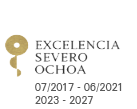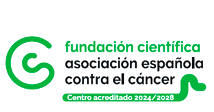
2025/11/18
Closing ceremony of the Complementary Plan for Biotechnology Applied to Health brings together institutional and scientific leaders to celebrate over three years of cooperation
On November 17th, the closing ceremony of the Complementary Plan for Biotechnology Applied to Health took place, bringing together institutional representatives, researchers and key stakeholders from the Spanish biomedical ecosystem. The event highlighted more than three years of coordinated efforts aimed at advancing personalized and precision medicine in Spain.
Over this period, the Complementary Plan has supported collaborative research projects, the development of cutting-edge scientific and technological infrastructures, and a range of knowledge-transfer initiatives. These efforts have helped consolidate new inter-regional synergies and strengthen public health capabilities. The event served as an opportunity to present the achievements attained, assess future challenges and underscore the impact of this major strategic initiative.
The session was formally opened by Juan Cruz Cigudosa, Secretary of State at the Ministry of Science, Innovation and Universities. He underlined the strategic importance of the Complementary Plan for Biotechnology Applied to Health and its positive influence on the national scientific landscape. He also announced that a new Complementary Plan focused on knowledge transfer will be launched before the end of the month, followed by a second phase with dedicated project funding, an essential step to foster innovation and collaboration nationwide, and ensure that advances ultimately benefit patients.
A subsequent roundtable brought together institutional representatives from nearly all participating autonomous communities:
- Jesús M. Salvador (Scientific Advisor to the Secretary of State at the Ministry of Science, Innovation and Universities),
- Amaia Esquisabel Alegría (Director of Scientific Policy, Basque Country),
- Teresa Sanchis (Director General for Research and Universities, Catalonia),
- Carmen Cotelo (Director, Galician Innovation Agency),
- Rosario Serrano Vargas (Managing Director, Research and Innovation Agency of Castilla-La Mancha),
- Javier de Francisco Morcillo (Secretary General for Science and Innovation, Extremadura),
- Loreto del Valle Cebada (Director General for Research Planning, Andalusia).
The representatives unanimously highlighted that the Complementary Plan had significantly reinforced collaboration, both across regions and within their respective research ecosystems, enhancing connections among institutions, scientific actors and disciplines. They also emphasized the Plan’s contribution to talent development and the creation of new scientific capabilities, whether through platforms, research lines or new staff incorporations. Furthermore, they stressed the agility achieved during implementation and the strategic value of the Plan in generating tangible results that will continue to extend beyond its formal duration.
The institutional segment concluded with remarks by Núria Montserrat Pulido, Minister for Research and Universities of the Government of Catalonia, who described science as “anticipation, ambition and soul”. She underscored the importance of anticipating needs and strategically allocating funds to research, even in moments of uncertainty, such as during the COVID-19 pandemic, and she affirmed that ambition and purpose are intrinsic to scientific progress and to a strong research culture. Montserrat also acknowledged the coordinating role of the Institute for Bioengineering of Catalonia (IBEC) alongside the autonomous communities, noting that this collaboration had helped transcend regional boundaries.
Review of the plan’s scientific milestones
Following a networking break, Josep Samitier, National Coordinator of the Complementary Plan for Biotechnology, presented an overarching assessment of the Plan’s achievements and scientific progress during its three years of implementation. He highlighted the strong collaboration among autonomous communities, research centers, hospitals and universities, which has enabled an effective model for knowledge transfer.
Key achievements included the creation of 10 technological platforms, which collectively accumulated more than 400,000 hours of use by over 200 researchers from more than 70 groups, providing broad access to state-of-the-art infrastructures and tools.
The scientific impact of the Plan has been substantial: more than 100 participants carried out 84 projects and actions, 45 of which were inter-regional collaborations. These efforts generated 150 employment contracts and 206 measurable outputs, including scientific publications, patents, technology-transfer agreements, spin-offs and licenses. The Plan also achieved significant visibility and outreach, with over 300 blog posts, 1,130 LinkedIn followers, 74,200 YouTube views and participation in 430 scientific events between 2022 and 2025.
Impact and outcomes across the Autonomous Communities
In the Basque Country, the session was led by Óscar Millet, who introduced the AKRIBEA project and its main outcomes. Iban Ubarretxena Belandia presented the BREM infrastructure, developed with support from the Ministry and the Complementary Plan and now available to the entire Spanish scientific community. Alain Ibáñez de Opakua detailed research efforts focused on biological versus chronological age.
In Catalonia, Alfonso Valencia highlighted the potential of DATOS-CAT, noting that “connecting multiple cohorts through a federated system would represent a major national asset, enabling the creation of a unique, robust and representative database”. Meanwhile, Manel Juan and Hugo Calderón of Hospital Clínic de Barcelona presented the LENTI-UP project and provided an overview of CAR-T therapy, outlining next steps to expand collaborations, enhance these therapies, develop new solutions and advance toward safe and economically sustainable patient applications.
Additional flash presentations by Susanna Navarro, Giuseppe Battaglia and Pamela Lustig showcased progress in their respective research lines.
In Galicia, the Spanish Public Chemotheque, presented by Inés Ardao and moderated by Mabel Loza, stood out as a key achievement. This molecular library, which now contains 700 chemical compounds (350 originating from Galicia), aims to integrate with other national and European collections to strengthen collaboration and accelerate drug discovery within an open-science framework.
In Castilla-La Mancha, Valentín Ceña introduced the NANO4GLIO project on glioblastoma treatment. Ceña used the metaphor of research as a tree that continuously grows new branches to convey how the Complementary Plan has stimulated new research avenues, international collaborations and scientific publications.
In Extremadura, Francisco M. Sánchez Margallo presented major results from line 6, emphasizing how the Plan has supported, coordinated and given visibility to the team’s scientific work. Juan A. Sánchez Margallo discussed the ergonomics and stress-reduction benefits of robotic surgery, enabled by enhanced stability, 3D vision and reduced fatigue. Pedro M. Núñez Trujillo then described the use of artificial intelligence for early breast cancer detection, a line of work initiated thanks to the Complementary Plan.
In Aragón, Delia Recalde discussed the implementation and analysis of Precision Medicine databases. Olga Abián presented the drug-screening platform and drug-target interaction studies, while Rosario Osta described the TAMP animal-model platform, which facilitates precise disease modeling and the development of innovative therapies.
In Andalusia, Mario Delgado underscored the creation of four new platforms supported by the Plan, including the BIOGENEC catalog, an evolving resource that already includes 60 biomodels and gene-editing tools available to the scientific community. Additional presentations from Joaquín Dopazo, Eduardo Andrés and Javier López-Ríos covered advancements in diagnostic tools, advanced therapies and omics technologies applied to precision medicine.
Looking ahead
The closing ceremony not only celebrated the progress made under the Complementary Plan but also reaffirmed the shared commitment to sustaining and expanding the synergies generated throughout its implementation. Both participants and organizers underscored the importance of continuing to advance personalized medicine, inter-regional cooperation and the development of emerging technologies capable of improving population health.
About CIC bioGUNE
The Centre for Cooperative Research in Biosciences (CIC bioGUNE), member of the Basque Research & Technology Alliance (BRTA), located in the Bizkaia Technology Park, is a biomedical research organization conducting cutting-edge research at the interface between structural, chemical, molecular and cell biology, with a particular focus on generating knowledge on the molecular bases of disease, for use in the development of new diagnostic methods and advanced therapies.
About BRTA
BRTA is an alliance of 4 collaborative research centres (CIC bioGUNE, CIC nanoGUNE, CIC biomaGUNE y CIC energiGUNE) and 13 technology centres (Azterlan, Azti, Ceit, Cidetec, Gaiker, Ideko, Ikerlan, Leartiker, Lortek, Neiker, Tecnalia, Tekniker y Vicomtech) with the main objective of developing advanced technological solutions for the Basque corporate fabric.
With the support of the Basque Government, the SPRI Group and the Provincial Councils of the three territories, the alliance seeks to promote collaboration between the research centres, strengthen the conditions to generate and transfer knowledge to companies, contributing to their competitiveness and outspreading the Basque scientific-technological capacity abroad.
BRTA has a workforce of over 4,000 professionals, executes 22 % of the Basque Country's R&D investment, registers an annual turnover of more than 300 million euros and generates 100 European and international patents per year.
See a large version of the first picture





